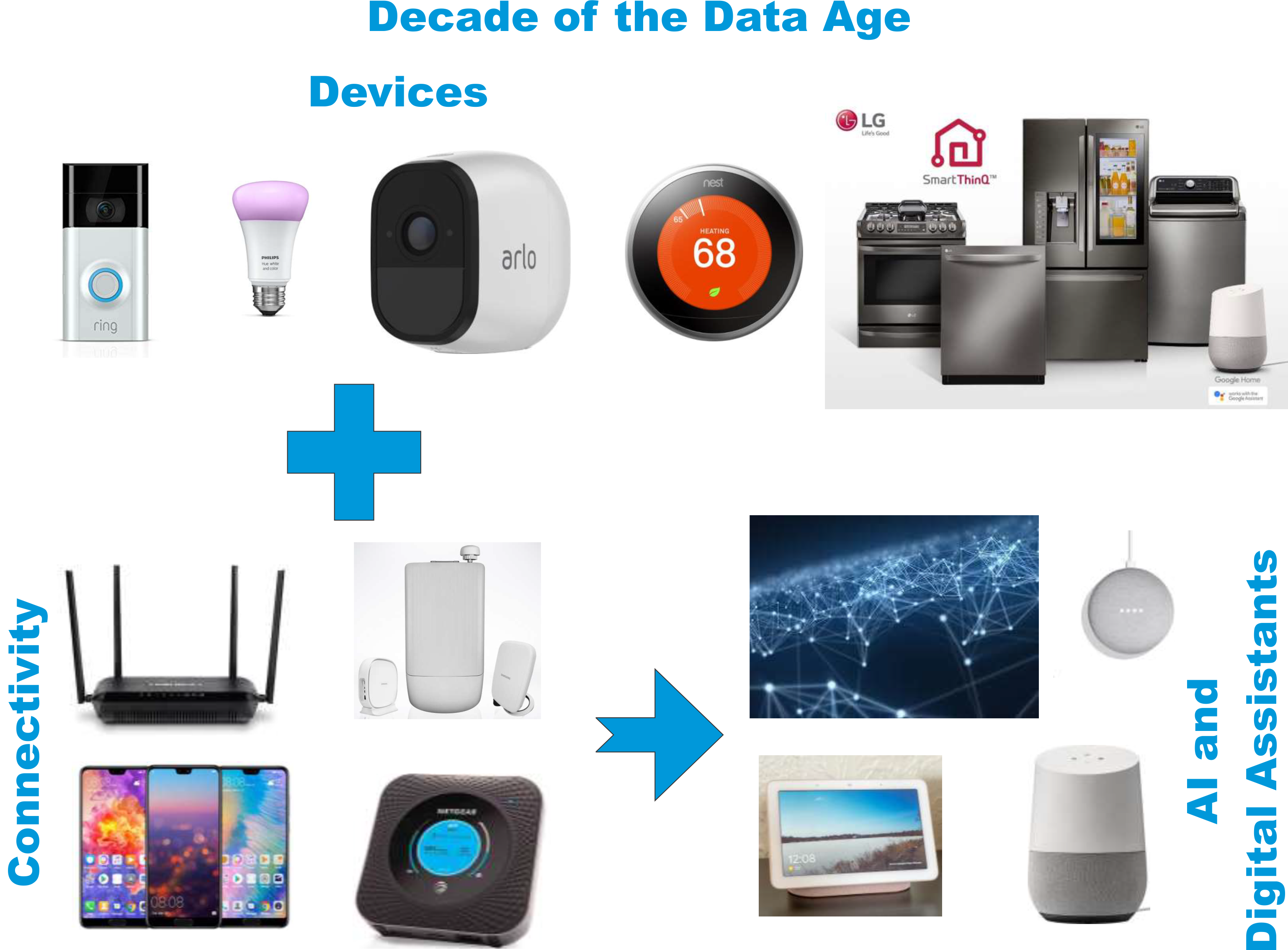
New Decade of Consumer Technology
The first decade of the 21st century was known for introducing smartphones to the masses, as well as introducing the first smart TV. Ten years later starting in 2010, the world became socially connected thanks to companies such as Facebook, Twitter and Netflix. We are now rapidly approaching a new period of consumer technology called the Data Age.
This “Data Age” comes to life under the shadow of the tremendous flow of data security and privacy concerns becoming the number one issue across the entire globe. Different countries are dealing with these complex issues with different solutions and with The European Union for example, implemented strict rules and regulations, last year, called GDPR (General Data Protection Regulation). China, on other hand, has no government organized privacy and security regulations.
Both companies and individuals are at risk. “With computing processing power increasing dramatically, even passwords that are 14 to 20 characters long will be readily crackable and largely ineffective for protecting high-value, high-risk assets and transactions by 2020”- warns Forrester, an American market research company that provides advice on existing and potential impact of technology to its clients and the public.
As risky as this as can be, the world must stay connected because only this connectivity allows us to live in smart cities, in intelligent houses, drive connected cars and very soon be driven by autonomous vehicles.
This next generation of data connectivity will require wireless technology from 5G that can connect devices with the next generation fast speeds. Those in the race to bring the technology to marketplace and get a foot int the door for the business that goes with it include China Telecom, KDDI in Japan, SK telecom in South Korea, through Verizon and AT&T in the USA, Shaw and Rogers in Canada, to Ericsson all over Europe: Vodafone and BT in United Kingdom, Deutsche Telecom in Germany, Orange in France and Telefonica in Spain. As 5G becomes a crucial component of technology development, the entire world needs to adapt to it.
In the last few years, home security cameras, thermostats, and connected lighting equipment have become more common in homes and sales continue to increase. Just imagine how the IoT (Internet of Things) environment is going to explode with the rollout of 5G.
For example, for smart home development into existing homes, consumers usually don’t buy all those devices from the same platforms or at the same time. This brings the challenge of how the consumer can connect all these different products, brands and platforms together as well as the devices that haven’t even been invented yet. The idea of a practical smart home is like bringing together different instruments to create a symphony orchestra that need to play in unison. Following connectivity, the Smart Home’s Next Trend will be Interoperability and Intelligence.
It is difficult to imagine the smart home without some type of digital assistance activated by voice and equipped with Artificial Intelligence. Three truths about voice/AI assistant are: 1.) Digital assistance is going into everything: devices, appliances and cars 2.) Support for digital assistance has become table stakes: services, brands, commerce 3.) Voice is quickly becoming the “go-to” interface – it allows you to keep doing what you are doing as well as have the digital assistant do something that normally requires your hands.
For example, Amazon Alexa has nearly 60,000 skills and 20,000+ compatible devices. The way how we interact with digital assistance shown the study done by Consumer Technology Association (CTA) in August 2018. US online adult study shows how people make a use of Amazon Alexa(in%): Ask questions – 63, Check the weather – 58, Listen to music/radio/podcasts – 50, Set a timer or alarm – 45, Call someone – 32, Check the news/sports – 30, Send a message to someone – 25, Search for recipes/cooking information – 23, Check personal calendar – 22.
We also beginning to understand the limits of automation. AI intelligence and automation are really transform the way we access data, we use data. AI is helping us to understand the data. The first generation of voice control required people to learn “command words” and “special phrases”. With AI in the system, it can now understand conversation and what actions to do next. For example, without AI and data analysis you would say “Alexa, turn up the thermostat by 2 degrees” now you can say “Alexa, I am cold”. The system will recognize who “I” is and the context for the word “cold” based on what location you were talking from and the system can respond “would you like me to turn up the thermostat by 2 degrees”.
This direction of connectivity, interoperability, high speed data and analytics as well as “personalized models” is what is driving the next generation of Smart Home. The “personalized models” are the core of the privacy concerns. It means the computer has to both know that it is you, and more importantly know everything about you – what you eat, where you shop, what temperature you like the house, what shows you watch and what music you listen to, who you visit and talk to, what your schedule is, what your interests are, To be able to be helpful, the computer has to know how to help. By knowing how to help you be more comfortable, it means that all of that data has to be stored someplace, and hopefully used only for your benefit. Governments, companies, and technology are all working together, finally, to try and insure the next decade is a beneficial Data Age to make your life better.


